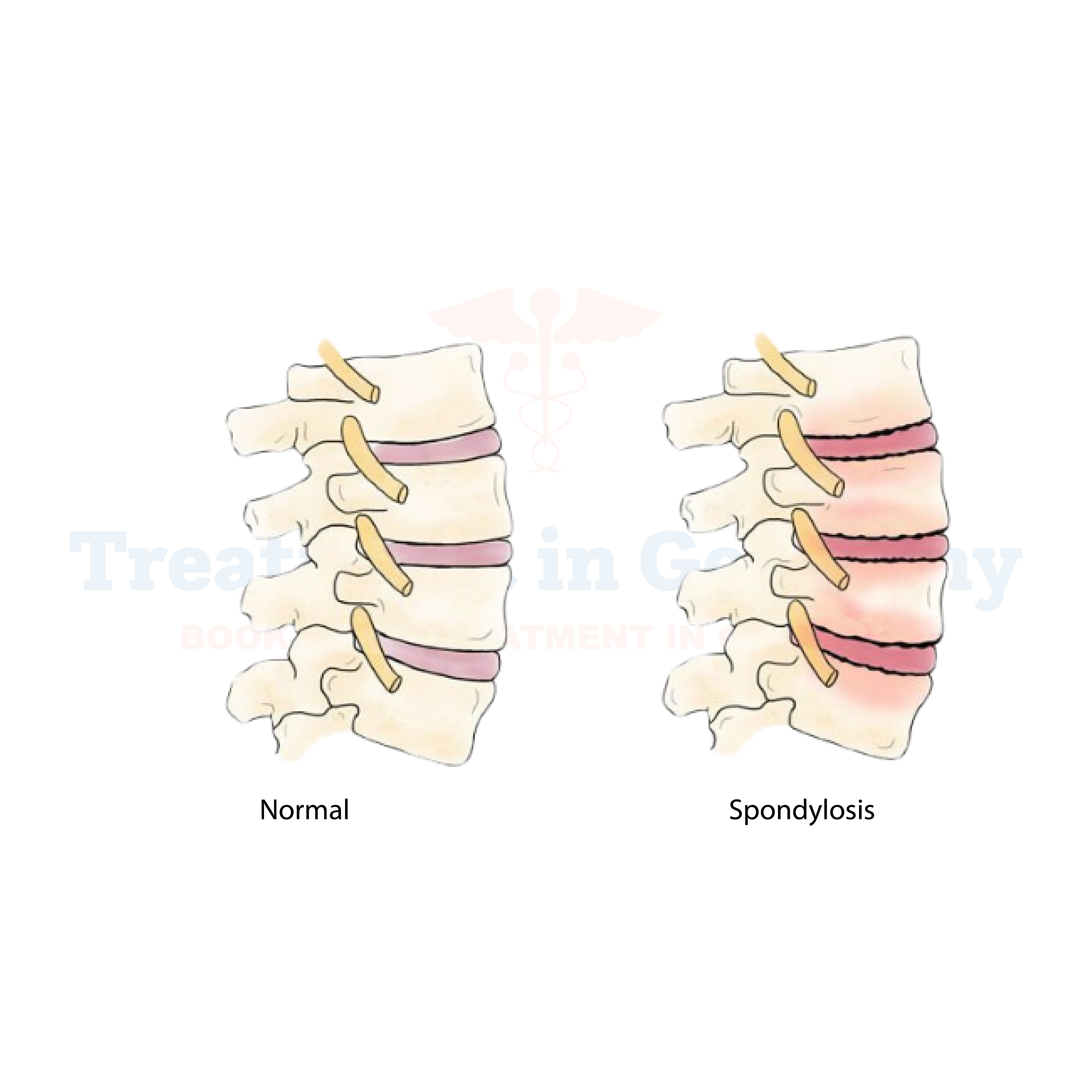What is Spondylosis?
Spondylosis, commonly referred to as spinal osteoarthritis, is a degenerative condition of the spine that typically occurs with age. It affects the joints and discs of the spine, leading to pain and discomfort.
As we grow older, the discs between the vertebrae can lose moisture and elasticity, causing them to become stiff, narrow, and potentially develop bony growths called osteophytes. This degenerative process is known as spondylosis.
Side Effects of Spondylosis
Patients with spondylosis often experience:
- Pain: Persistent or intermittent pain in the affected area of the spine, which can radiate to the arms or legs depending on where the condition is located.
- Stiffness: Difficulty in moving the spine, especially after periods of inactivity.
- Numbness or tingling: These sensations may occur if nerves are compressed due to narrowing of the spinal canal or foraminal spaces.
- Muscle weakness: In severe cases, nerve compression can lead to weakness in the muscles served by the affected nerves.
How is Spondylosis Diagnosed?
Diagnosing spondylosis typically involves:
- Medical History and Physical Examination: Your doctor will discuss your symptoms and conduct a physical exam to assess your range of motion, reflexes, and any signs of nerve compression.
- Imaging Tests: X-rays, MRI (Magnetic Resonance Imaging), or CT (Computed Tomography) scans may be ordered to visualize the spine and identify any structural changes, such as osteophytes or narrowing of the spinal canal.
- Electromyography (EMG) and Nerve Conduction Studies: These tests may be performed to evaluate nerve function and identify any areas of nerve compression.
Potential Treatments for Spondylosis
Treatment options for spondylosis aim to manage symptoms, reduce pain, and improve mobility. Depending on the severity and location of symptoms, treatments may include:
- Medications: Nonsteroidal anti-inflammatory drugs (NSAIDs), muscle relaxants, and pain relievers may be prescribed to alleviate pain and inflammation.
- Physical Therapy: Exercise programs designed to strengthen the muscles supporting the spine and improve flexibility can help reduce symptoms.
- Injections: Corticosteroid injections directly into the affected area of the spine can provide temporary relief from pain and inflammation.
- Surgery: In cases where conservative treatments fail to relieve symptoms and there is significant nerve compression or spinal instability, surgical options such as discectomy, laminectomy, or spinal fusion may be considered.

.webp)
.webp)
 (1).webp)
 (1).webp)

.webp)
.webp)
 (1).webp)
 (1).webp)
